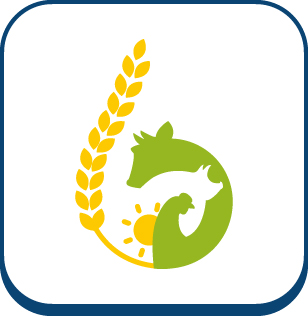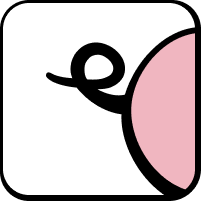Effect of sodium nitrite doses on nitrosation, nitrosylation and peroxidation during the shelf-life of refrigerated pork liver pâtés
Abstract. Sodium nitrite is an additive traditionally used in meatproducts to ensure microbiological safety andsensory quality with the development of typical cured meat colour and flavour. The use of nitrite iscontroversial due to its potential adverse health effects. The mains risks are its involvement in theformation of nitroso-compounds: nitrosamines, nitrosothiols and nitrosylated heme iron. However, nitriteplays a significant role on peroxidation by limiting the formation of terminal aldehydes [malondialdehyde and 4-hydroxynonenal], presumed toxic1. Removing nitrite remains complex for meat products sensitive to microbiological risks and oxidation. Pork liver pâté (spread type) is sensitive to oxidations because of its composition (fat and iron) and its process (mincing, emulsyfing, and thermal treatment). Hence, this study aims to determine the effect of sodium nitrite doses on nitrosation, nitrosylation and peroxidation, measured during the shelf-life of liver pâtés. Three experimental pâtés were manufactured in an industrial pilot plant: N80 (conventional dose of NaNO2: 80 mg/kg), N40 (reduced dose of NaNO2: 40 mg/kg) and N0 (control without NaNO2). An identical formula was used with following ingredients: pork fat, pork liver, milk, eggs, salt, onion powder, black pepper powder, nutmeg, and sodium ascorbate (500 mg/kg). Pâtés were cooked until an internal temperature of 72°C, and after cooling sliced and conditioned under protective atmosphere (MAP: 70%N2+30%CO2), then stored 10 days at 4°C and 20 days at 8°C. At day 15 post packaging, lipid, protein, and moisture were analysed (NF V04-403 - NF V04-407 - NF V04-403). Total and nitrosylated heme iron were measured at day 15 (Hornsey2). Nitrosamines and nitrosothiols levels were determined by measuring the nitrite released after cleaving S-NO and N-NO bonds3 (day 31). Peroxidation (TBARS4 method) and colour changes were evaluated at day 5, 15 and 31. Colour was measured on the surface immediately after opening the package in terms of CIELAB parameters using a spectrocolorimeter Minolta CM600 (L*: lightness; a*: redness; b*: yellowness). Pâtés contained similar amounts of protein (10.5 – 10.8 g/100g), fat (39.5 – 40.2 g/100g), and moisture (46.2 – 46.5 g/100g). Total heme iron was higher (+22%) in pâtés N80 and N40 compared to N0. In absence of nitrite, these results suggest some damage on the porphyrin ring, leading to the breakdown of heme molecules and the release of iron from globin. Nitrosylated heme iron was higher in presence of NaNO2, with nitrosylation rates of 72%, 61%, and 7%, respectively for N80, N40, and N0. This effect is known to limit peroxidation and improve colour. Slight nitrosothiol contents (< 1 mg/kg) were detected and the values were close to zero in N0. No nitrosamines were detected. NaNO2 doses affected peroxidation, with higher TBARS values in N0 compared to N80 and a slight decrease of TBARS values in N40. The effect of storage on peroxidation was only observed in N0. NaNO2 had a protective effect by neutralizing free radicals5. Liver pâtés exhibited different colour characteristics: N80 and N40 were redder and less yellow than N0. A redness difference between N0 and products with nitrite was noticeable since differences were greater than 2. The storage induced a slight decrease of a* and b* on the surface of all pâtés (N80, N40 and N0). In conclusion, pork liver pâté without NaNO2 is less attractive due to the peroxidation that impacts flavour and colour which is perceived as grey6 (a* values). A protective effect of nitrite on peroxidation was observed, with only a slight level of nitrosothiol content, and no nitrosamine detected. Nitrosylated heme iron increases with increasing NaNO2 levels. This work should be completed by an analysis of nitrosocompounds during digestion. Nonetheless, 40 mg/kg NaNO2 should be a good compromise, in association with polyphenols to keep colour and flavour, and limit the formation of nitroso-compounds and aldehydes presumed toxic, if this dose is sufficient to protect against microbiological risks.
Fiche technique
Titre :
Effect of sodium nitrite doses on nitrosation, nitrosylation and peroxidation during the shelf-life of refrigerated pork liver pâtés
Date sortie / parution :
2022
Référence :
68th International Congress of Meat Science and Technology (ICOMST), 22-25 août 2022, Kobé, Japon
Auteurs
Quelques mots clés
Autres documents
Muscle composition of carcass and of body weight gain assessed by computed tomography in pigs: feeding level and sex effect
The general aims of SCANALI and EFFISCAN projects were to investigate the interest of using computed tomography to access to new criteria related to body composition and feed efficiency. The…
Publié en 2022Prediction of lean meat content in pork carcasses: genetic effect
The lean meat content (LMC) is one of the criteria used in the breeding evaluation of pigs. The evaluation of the French populations uses an equation predicting the old definition…
Publié en 2022Entire male effect on the rate of destructured zones of pork ham
Since the 1st of January 2022, piglets castration is not allowed in France except under anesthetic and analgesic. There is no general agreement about alternative solutions and pig producers can…
Publié en 2022Muscle composition of carcass and of body weight gain assessed by computed tomography n pigs : genetic effect
The general aim of EFFISCAN project was to investigate the interest of using computed tomography to access to new criteria related to body composition and feed efficiency. The specific objective…
Publié en 2022









